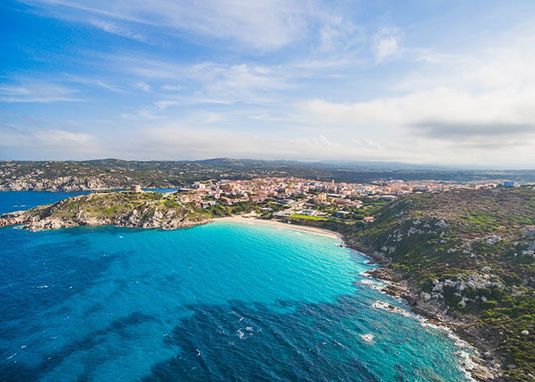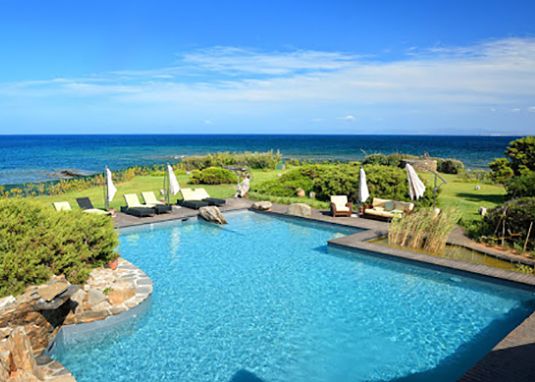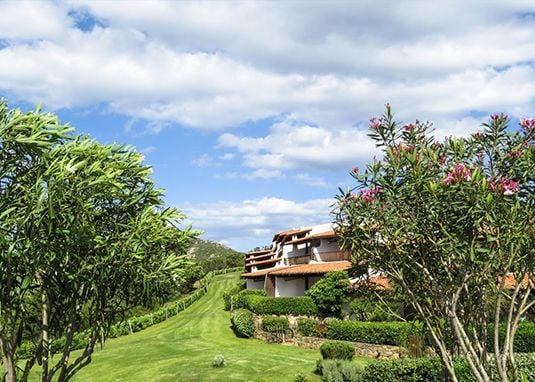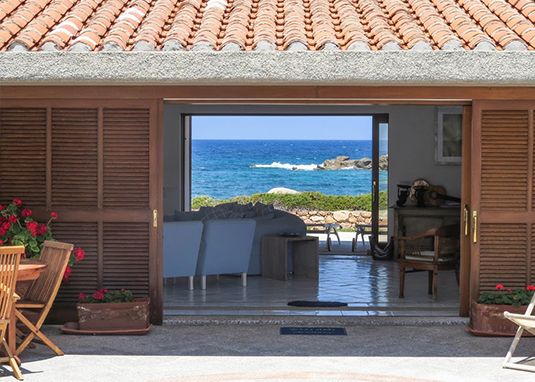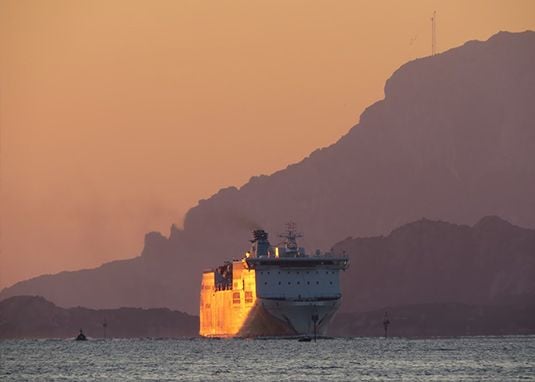
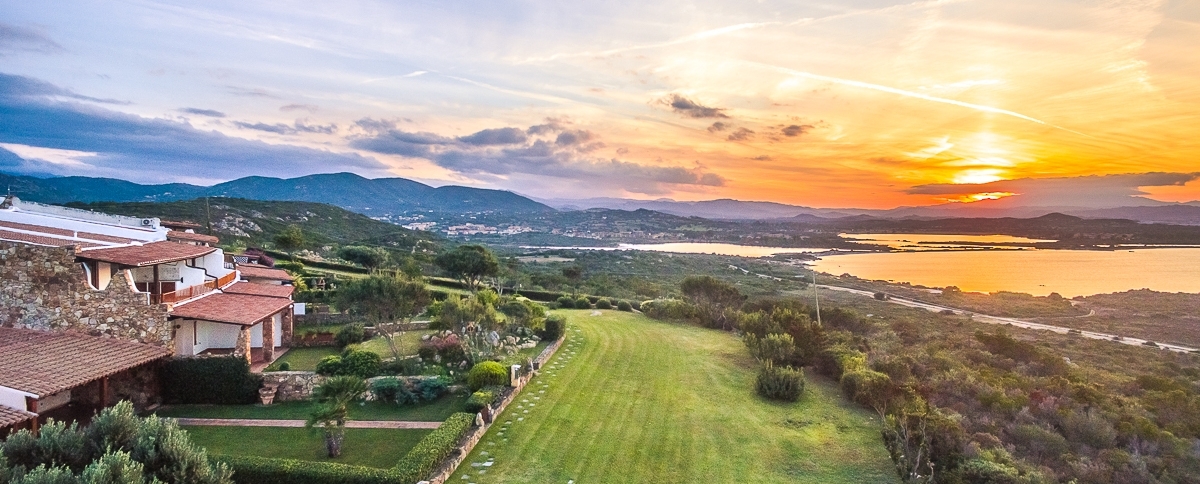
TROUVEZ VOTRE MAISON EN SARDAIGNE
Le Territoire
The peninsula of Capo Ceraso is part of the Protected Marine Area of Tavolara, and is characterized by a varied and charming landscape, a succession of bays, beaches, coves and headlands. The protected zone covers the entire territory that stretches from the beach La Cinta southbound, up to Capo Ceraso northbound and the three islands Tavolara, Molara e Molarotto.
The majestic Tavolara Island, the archetypal ideal island, owes its name to its particular narrow and long shape, ending in the offshoots of Punta Timone to the East and the flatter Spalmatore di Terra to the West. The big island rises up to 565 m above sea level with the peak of Punta Cannone, and lies in its magnificence on the surrounding territory, welcoming to Sardinia visitors landing in Olbia via ferry.
The island makes up a precious framework in which the sea, with its turquoise waters, meets the coast with its white beaches, the pink granite rocks and the high white limestone cliffs, creating a matchless mosaic of colours.
The atmospheric effect called "Il cappello di Tavolara", caused by the encounter between the hot and humid air currents and the mountain barrier, is even visible from far away and one can enjoy the changing scenarios related to the play of the wind and the clouds as perspective on the island changes.
A long and mysterious history.
Up to 10,000 years ago, during the last glaciation, the island was connected to the mainland and emerged from a wooded and hillside area. As the ice melted, about 8,000 years ago, Tavolara gradually began to come apart first from the other islands and then from the mainland. Traces of its geological history can be found on the seabed, where "fossil beaches", underwater archaeological structures that indicate the level reached by sea through the ages, can be observed.
On the island there are more than eighty archaeological sites which testify to the rites of worship and prayer that took place there. Particularly noteworthy is the cave of the Pope, of the Middle Neolithic, inside which some rock paintings dating back to over 5,500 years ago, depicting pastel pink and orange hued human figures, can be found.
The seabeds around the island are particularly rich in shipwrecks, which testify to the fact that throughout the ages the island, though not having permanent settlements, had always had a strategic position with respect to commercial traffic from the mainland to Olbia, a city founded by the Carthaginians in the fourth century BC. After the key role played in Roman and Byzantine times, from 1400 the Tavolara Island experienced a long period of decline which only ended with the advent of the Savoy dynasty. It was Carlo Alberto Prince of Savoy who assigned to Paolo Bertoleoni, a descendant of one of the island's first inhabitants, the title of island's owner. From that very moment, Bertoleoni began to see himself as the "king of Tavolara "the smallest kingdom in the world", of which some traces can even be found at Buckingham Palace, among the portraits of all the kings of the Earth.
In the 60s, with the arrival of the Navy, which expropriated the area to build a military base for very low frequency radio communications, the small community of fishermen and lighthouse keepers moved to the coast where they founded Porto San Paolo.
The Molara Island much less impressive than Tavolara, owes its name to its rounded, wheel-like shape that characterizes it.
The island, consisting of pink granite, is very rocky and steep, but it also has a variety of perennial springs which allowed human settlements to develop, and is covered by the typical dense scrub vegetation, the Mediterranean Scrub, which is characteristic of Mediterranean coastal regions.
The famous Molara pools, a shallow stretch of turquoise and transparent waters, are one of the island's major attractions along with some ruins of Churches and medieval villages.
At Cala Chiesa stands the village of Gurguary, the only surviving example of a medieval village in Sardinia and parts of the St. Pontian's Church, linked to the figure of Pope Pontian who died in exile on Tavolara. Currently, the island is owned by an Olbia-based family and visits are only allowed along the coast.
Molarotto, the third island forming part of the protected area, is the last outpost of land before the open sea.It is a small outcrop of pink granite sometimes turning white due to a multitude of birds nesting in the nearby islands which alight to rest there. la terza delle isole facenti parte dell'area protetta, rappresenta l'ultimo avamposto di terra prima del mare aperto.



















